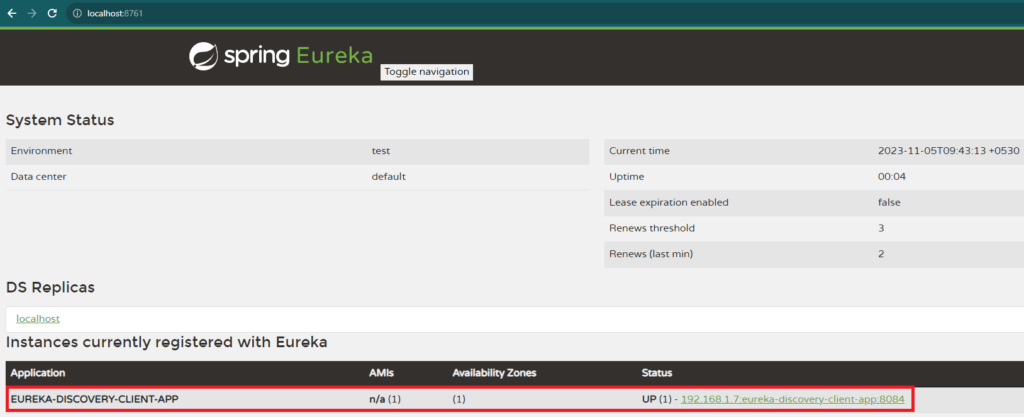In today’s software landscape, microservices are the building blocks of robust and scalable applications. The Spring Boot Eureka Discovery Client stands as a key enabler, simplifying the intricate web of microservices. Discover how it streamlines service discovery and collaboration.
Table of Contents
Spring Boot Eureka Client Unveiled
Diving Deeper into Spring Boot Eureka Client’s Vital Role
The Spring Boot Eureka Client plays an indispensable role within the Eureka service framework. It serves as the linchpin in the process of discovering services, especially in the context of modern software setups. This tool makes the task of finding and working with services in microservices exceptionally smooth.
Your Guide to Effortless Microservices Communication
Navigating Microservices with the Spring Boot Eureka Client
Picture the Eureka Discovery Client as an invaluable guide in the world of Eureka. It simplifies the intricate process of connecting microservices, ensuring seamless communication between different parts of your system.
Spring Boot Eureka Discovery Client as Your Service Discovery Library
Delving Deeper into the Technical Aspects
From a technical standpoint, think of the Eureka Discovery Client as a library. When you integrate it into your microservices, it harmonizes their operation with a central Eureka Server, acting as a hub that keeps real-time tabs on all available services across the network.
Empowering Microservices with Spring Boot Eureka Client
Discovering and Collaborating with Ease
Thanks to the Eureka Discovery Client, microservices can effortlessly join the network and discover other services whenever they need to. This capability proves invaluable, particularly when dealing with a multitude of services that require quick and efficient collaboration.
Simplifying Setup, Strengthening Microservices
Streamlining Setup Procedures with the Spring Boot Eureka Client
One of the standout advantages of the Eureka Discovery Client is its ability to simplify the often complex setup procedures. It ensures that services can connect seamlessly, freeing you to focus on enhancing the resilience and functionality of your microservices.
Getting Started with Spring Boot Eureka Client
Your Journey Begins Here
If you’re contemplating the use of the Spring Boot Eureka Client, here’s a step-by-step guide to set you on the right path:
Setting Up Eureka Server
Establishing Your Eureka Server as the Central Registry
Before integrating the Eureka Discovery Client, you must have a fully operational Eureka Server. This server serves as the central registry where microservices register themselves and discover other services. For detailed instructions, refer to the Eureka Server Setup Guide.
Adding Dependencies for Spring Boot Eureka Discovery Client
Integrating Essential Dependencies into Your Microservice Project
In your microservice project, including the required dependencies is essential. If you’re leveraging Spring Boot, add the spring-cloud-starter-netflix-eureka-client dependency to your project’s build file. For instance, in a Maven project’s pom.xml or a Gradle project’s build.gradle:
Eureka Discovery Client Maven Dependency
<dependency>
<groupId>org.springframework.cloud</groupId>
<artifactId>spring-cloud-starter-netflix-eureka-client</artifactId>
</dependency>
Eureka Client Gradle Dependency
Integrating the Eureka Client Dependency in Your Gradle Project
To include the Spring Boot Eureka Client in your Gradle project, add the following dependency to your build.gradle file:
dependencies {
implementation 'org.springframework.cloud:spring-cloud-starter-netflix-eureka-client'
}Configuring Application Properties
Optimizing the Spring Boot Eureka Client Configuration
Tailoring your microservice’s properties and Eureka client settings in the application.properties file is crucial for optimal usage of the Spring Boot Eureka Client. Below is a sample configuration:
spring:
application:
name: eureka-discovery-client-app
server:
port: 8089
eureka:
client:
register-with-eureka: true
fetch-registry: false
service-url:
defaultZone: http://localhost:8761/eureka/,http://localhost:8762/eureka/
instance:
preferIpAddress: true
Enabling Spring Boot Eureka Discovery Client
Activating the Power of Spring Boot Eureka Client
To enable the Spring Boot Eureka Client functionality in your Java code, annotate your main application class as shown below:
@EnableDiscoveryClient
@SpringBootApplication
public class EurekaClientApplication {
public static void main(String[] args) {
SpringApplication.run(EurekaClientApplication.class, args);
}
}Service Registration and Discovery
Automated Service Registration and Effortless Discovery
Once your microservice initializes, it will autonomously register itself with the Eureka Server, becoming a part of the network. You can confirm this registration by examining the Eureka Server’s dashboard. Simply visit your Eureka Server’s URL, e.g., http://localhost:8761/

Seamlessly Discovering Services
Locating Services in Your Microservices Architecture
To locate other services seamlessly within your microservices architecture, leverage the methods provided by the Eureka Discovery Client. These methods simplify the retrieval of information regarding registered services. Programmatically, you can acquire service instances and their corresponding endpoints directly from the Eureka Server.
For further reference and to explore practical examples, check out the source code illustrating this process on our GitHub repository.
